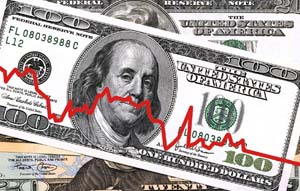Work Flow = Cash Flow

It is imperative for the organizational leader to focus on money. In addition, helping employees understand cash flow can provide a big boost to productivity. In other words, when employees understand how work flow affects billing, then they can understand how essential it becomes to get products and projects delivered to customers in a timely fashion. Let's examine some ways to stay on top of this challenge.
A period to measure cash flow can be weekly or monthly. Once this decision has been made, here is a step-by-step formula to establish your flow cycle tracking system.
1. Select your beginning and ending cash flow period.
2. Look at the amount of cash you have in the bank.
3. Subtract any payables (money actually paid out) for that period.
4. Add in receivables (money actually received) for that same period.
5. What is left is your cash on hand.
Be sure you are including payables and receivables that are actually coming in and going out.The next thing to do is to figure out your cash flow cycle. Answer the following questions:
1. Do you receive cash daily? Examples are companies that receive monies from retail or online sales every day.
2. Do you receive monies on a project-by-project basis? Remember this may include money at the beginning, mid-point, or end of a project.
3. Do you receive a deposit when the work is acquired and the remainder when the work is completed? (An example of this might be Attorneys. Typically, they will receive money up front and then place it in a trust from which to draw as a case proceeds.)
Understanding the wax and wanes of your cash flow system allows for better decision making around how quickly you may need to replenish cash, as well as around marketing and sales plans.
If you are new at tracking cash flow, then weekly tracking might be best at first. Continuing for four weeks is probably a good idea. Once you have a handle on your cash flow, you can then make a determination about how often you want to conduct the tracking process. After several months, you will have a much better perspective on your cash flow cycle. Here are some questions to ask about your cash flow.
1. How well is cash being managed?
2. How fast or slow is cash coming in?
3. Who in your organization should know about cash flow?
4. How should cash flow information be disseminated to those involved in the cash flow process?
Remember to include your employees in understanding how the company makes money. In addition, it is important to understand that a company never has too little cash flow to track. By paying close attention to how cash flow is tracked, business owners and CEOs can leverage even a small amount of cash and sometimes, especially since early on in a business, a little is all there is! Therefore, ensuring that everyone understands that work flow=cash flow will make a positive difference for your entire organization.
Thank you for reading this blog. Questions? Comments? call 404-320-7834 or visit www.performstrat.com or email This email address is being protected from spambots. You need JavaScript enabled to view it.. Graphic credit: Big Stock